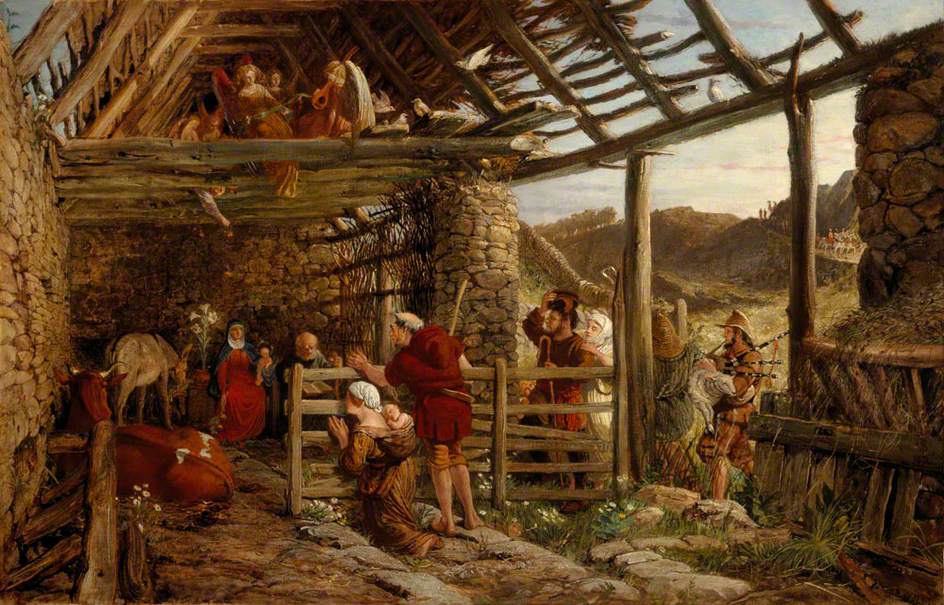Berlioz, L’enfance du Christ (Shepherd’s Farewell)
[We are posting this week’s Friday Performance Pick one day early so that it will be included in the Weekly Digest during the Christmas Season.]

Throughout time, composers have been known to play musical jokes. Sometimes a piece merely conveys an atmosphere of playfulness. Other times, composers choose to make a specific humorous point. Haydn’s Farewell Symphony (No. 45), for example, cleverly “sheds” players in the final movement, one by one, until only two players remain. Haydn used this unexpected design to persuade his boss, the prince, to let his court musicians return home after an extended period away.
Hector Berlioz’s oratorio L’enfance du Christ (1854) originated as a different type of musical joke, that of a composer passing off a newly written work as a piece written by someone else in an earlier time period. Like many jokes, this one started innocently enough. Berlioz composed a small organ piece as a gift for an organist friend named Joseph-Louis Duc and attributed it to an imaginary 17th-century composer named Pierre Ducré.
By the mid 19th century, Berlioz (arguably the most original of all Romantic composers) was encountering resistance to his works by critics and audiences alike. It was not an easy time in his life. Still, he was encouraged to turn this organ piece into a choral work. He entitled it L’adieu des bergers à la Sainte Famille (The Farewell of the Shepherds to the Holy Family) and placed it on a concert in Paris in November 1850. Those hearing the piece were charmed. One woman famously lamented what a pity it was that Monsieur Berlioz was unable to compose anything nearly as lovely.
Berlioz then decided to expand the work by adding two numbers, one of which was an overture that evoked an “ancient” sound. The work was published in 1852 under the title La fuite en Egypte (Flight into Egypt). The joke, by then quite serious, was revealed right on the title page.
He continued to expand the work backwards, adding a dramatic opening in two parts (“Nocturnal March” and “Dance of the Sooth-Sayers”) that portray the enraged King Herod ordering the massacre of the innocent newborns. Then he composed a third part (“The Arrival at Saïs”) that depicts the Holy Family in exile, struggling to set up their new life. The piece closes with a filigree-like choral meditation on the whole story.
There are few pieces I love as much as L’enfance du Christ. Despite living his adult life as an atheist, Berlioz retained the tenderest memories of his childhood as a Roman Catholic, and precisely that tenderness shaped this work and touched my heart.
But there is another reason I love it. While doing my master’s degree at the University of North Carolina, Chapel Hill, I took a demanding survey of the oratorio offered by the world’s specialist on the genre, Dr. Howard Smither, an elegant scholar who later became my dissertation advisor. The course plunged us into the vast world of the oratorio—a sacred vocal form that is not acted or costumed, but does have characters and tells a story.
Step by step we traced the origins of the oratorio from medieval and Renaissance sources, and then marched through centuries of repertoire up to the very year of our course (1977). I was flabbergasted not only by Smither’s encyclopedic knowledge but by the waves of colorful vocal and orchestral drama I had never before encountered. Ultimately, I based my own dissertation around an obscure, but seminal Russian patriotic oratorio written by an ill-fated Ukrainian serf in 1813. But that all lay in the future when I heard my first recording of “The Shepherd’s Farewell” and sank into its beauty.
May this gentle chorus lead you to explore the complete oratorio. And may you marvel as to how a composer’s playful joke could sow the seed for such a tender piece.



